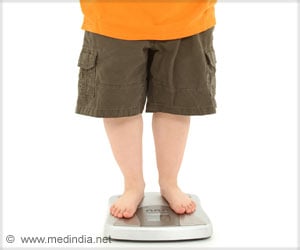Heavy Burden of Obesity: Close to half of US population are more likely to be obese and overweight by 2030, reveals a new study.

‘Heavy Burden of Obesity:Close to half of US population are more likely to be obese and overweight by 2030.’
Read More..




The study also predicts that in 29 states, more than half of the population will have obesity, and all states will have a prevalence of obesity higher than 35%. The study’s researchers estimate that, currently, 40% of American adults have obesity and 18% have severe obesity.Read More..
The researchers said the predictions are troubling because the health and economic effects of obesity and severe obesity take a toll on several aspects of society. "Obesity, and especially severe obesity, are associated with increased rates of chronic disease and medical spending, and have negative consequences for life expectancy," said Steven Gortmaker, professor of the practice of health sociology at Harvard Chan School and senior author of the study.
For the study, the researchers used self-reported body mass index (BMI) data from more than 6.2 million adults who participated in the Behavioral Risk Factor Surveillance System Survey (BRFSS) between 1993 and 2016. Body mass index (BMI) is calculated by dividing a person’s weight in kilograms by the square of their height in meters. Obesity is defined as a BMI of 30 or higher, and severe obesity is a BMI of 35 or higher.
Self-reported BMIs are frequently biased, so the researchers used novel statistical methods to correct for this bias.
The large amount of data collected in the BRFSS allowed the researchers to drill down for obesity rates for specific states, income levels, and subpopulations.
Advertisement
"The high projected prevalence of severe obesity among low-income adults has substantial implications for future Medicaid costs," said lead author Zachary Ward, programmer/analyst at Harvard Chan School’s Center for Health Decision Science. "In addition, the effect of weight stigma could have far-reaching implications for socioeconomic disparities as severe obesity becomes the most common BMI category among low-income adults in nearly every state."
Advertisement
Source-Eurekalert















